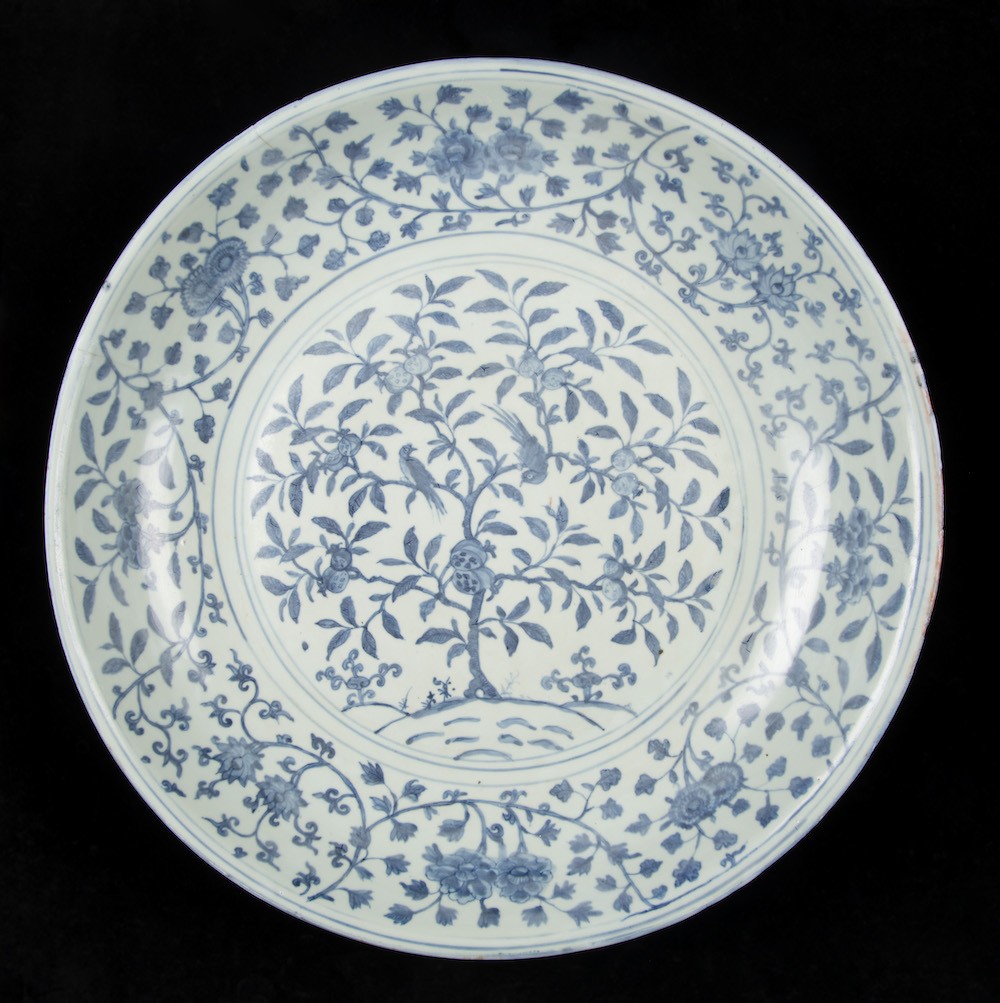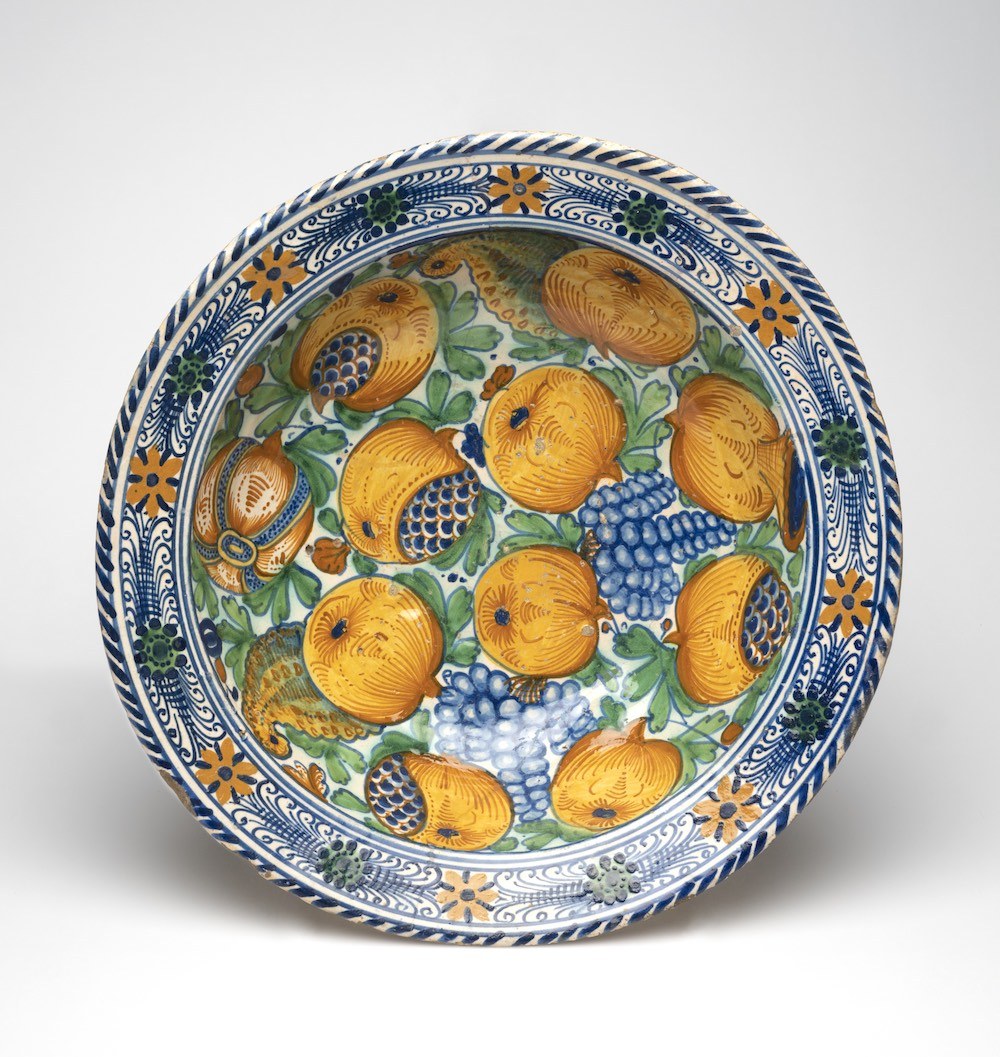‘How to peel a pomegranate’: Exotic fruit as artistic inspiration
‘Epluchez vos grenades’, or ‘Peel your pomegranates’ is how François Pierre de la Varenne directed his readers in his recipe for a pomegranate salad, in his popular cookery book, Le cuisinier François of 1651. The simplicity of this French cook’s instructions (not unlike The Great British Bake Off’s technical challenge) hides the complexity of the technique of removing the precious blood-red seeds of a pomegranate, which even today elicits a flurry of suggestions. Do you cut the peel horizontally and then ‘bash the back of the fruit with a rolling pin or heavy wooden spoon’ as Yotam Ottolenghi suggests? Do you carefully score the fruit vertically and remove the peel to reveal the inner globular fruit? Or do you simply cut it down the middle and pull out the seeds from their pith, squirting red juice everywhere? Presumably Ottolenghi’s mother or grandmother had passed on their pomegranate knowledge, showing him how to do it rather than writing it down. Similarly, La Varenne – like many cookery book writers of the early modern period – provides no specific practical details of how to peel a pomegranate.

As one of the oldest foods, the pomegranate has a long and complex history, from its origins in Iran and northern India to its transplantation around the globe, from China to Mexico. The fruit of the pomegranate as well as the tree are powerfully resonant symbols in many ancient cultures around the world. The bright red colour of its seeds and the wide-spreading branches of the tree could mean many things including beauty, fertility, hospitality, good luck, and eternal life. On the inside of this large mid-seventeenth-century Chinese blue-and-white serving bowl (fig. 1), two pomegranates are shown ‘growing’ at the heart of a pomegranate ‘tree-of-life’. The pomegranates are cut open to expose their seeds, a sign of the fruit’s reproductive capacity. Both the Chinese maker and the European elite buyer of this luxury porcelain dish would have understood that the cut pomegranates at the dish’s centre had symbolic meaning.

Although pomegranates remained luxury exotic fruits in the 17th century, they appeared as decorative motifs on a variety of objects, including, rather surprisingly, relatively inexpensive English ceramics, such as this 1639 clapmash bowl (fig. 2). Many of these dishes were given as engagement or marriage gifts, emphasising the link of the pomegranate to fertility. The scored sides of one of the pomegranates on the clapmash bowl (fig. 3) indicate one of the time-honoured methods of peeling a pomegranate, still in use today. One wonders whether the artisan painting this image on the inside of the dish would actually have had any idea at all of how to peel a pomegranate. Indeed, he or she had probably never even seen a real pomegranate, and were simply copying the motifs from books or prints. This may be one reason why the seeds are painted blue, but that’s another story….





